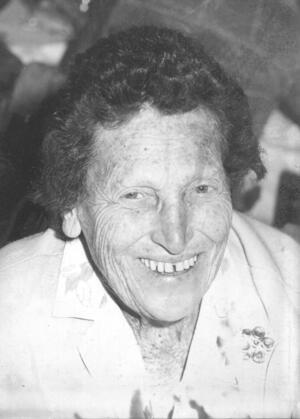The Social Justice and Science Superwoman: Tikvah Alper
Tikvah Alper.
Courtesy of Michael Sterne/Wikimedia Commons.
Few women have been both scientists and social justice activists in their lifetimes. Both of these roles are time-consuming and challenging, yet somehow Tikvah Alper succeeded as a distinguished radiobiologist and as a fierce opponent to the apartheid in South Africa. She faced much opposition as a woman, but still managed to have a significant impact in both of these spheres. As a young liberal feminist interested in pursuing a biology degree, I greatly empathize with Tikvah Alper’s struggles in the scientific community, and with her pursuit of social justice.
Although Alper’s major achievements came later in her life, her accomplishments as a young student should not be overlooked. I greatly admire Alper for the Ph.D. she received in biophysics in the 1930s despite the sexism against women in science at the time. A few years later, after moving to South Africa in 1933, Alper, together with her husband, started a small laboratory in her home because, since she was a married woman, institutions refused to offer her a position. I admire Alper because she could have easily blamed her husband for her unemployment, or simply given up, but instead she persevered. With her hard work, she earned a position lecturing about psychics at a university.
Alper revealed her persistent resistance to inequality early on. However, this was only the start of her success in fighting injustice in the field of science, and in the world at large. In reading about Alper, what I found most inspiring was a strong moral stand she took early on in her career. In 1948, her scientific talent and hard work led to her appointment as the head of biophysics in the South African National Physics Laboratory. In 1951, her opposition to apartheid forced her family to leave the country, and she had to accept a much lower position in the U.K. I found Alper’s courage and determination against oppression very surprising and rare, because people interested in science are often stereotyped as having few outside passions.
As someone who’s interested in pursuing a science career but also loves to read New York Times articles about U.S. politics, Haaretz news for updates on Israel, and obsesses over anything related to feminism and liberal activism, I see Alper as a superwoman who managed to balance her science interest and passion for social justice. Alper’s perseverance in her pursuit of a job in radiobiology despite the sexism she faced is an example for all young women interested in science that hard work can get us anywhere. Even at the worst times, when I get a poor grade on a science test or feel unmotivated in my school’s competitive atmosphere, I am reminded of Alper’s determination and continue investing my time and energy into what I love doing.
I'd still admire Alper, even if her main accomplishment was breaking the glass ceiling in radiobiology. However, its Alper’s strong social justice involvement that inspires me most given my activist background. I grew up in a humanistic Jewish youth movement, Habonim Dror, where I learned the importance of fighting against injustice. Alper’s challenge to the apartheid in South Africa is a shining example for what activism looks like for someone pursuing a science career. She proves that although science can be long hours of work in a lab and years of research, there will always be time to fight for what you believe in, whether that be joining discussions on climate change and the honey bee crisis or protesting Donald Trump’s cabinet choices.
Alper surmounted many obstacles as a female scientist, and was not afraid to publish highly controversial, ground-breaking research, or to take a strong political stand at a high cost to her career. She is a perfect example that all of us, regardless of profession, should feel compelled to fight for social justice. Although we may believe that in life we can only be one thing, Alper proves that activism is a responsibility we all have for living in this world.
This piece was written as part of JWA’s Rising Voices Fellowship.







